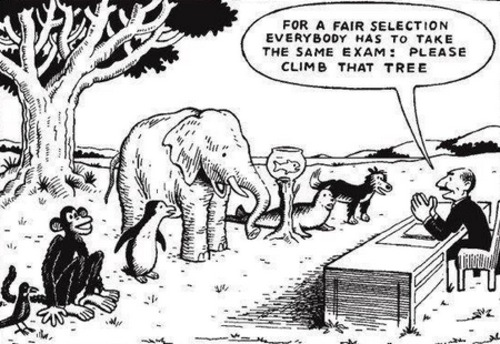Serendip is an independent site partnering with faculty at multiple colleges and universities around the world. Happy exploring!
Blogs

Symphonies of Science and Diffraction
chelseam and I listened to this song all the time last year. It was only tonight, though, when we revisited the video, that we realized that Barad could totally jam to this! Enjoy-- and remember, "we are all connected."

Symphonies of Science and Diffraction
chelseam and I listened to this song all the time last year. It was only tonight, though, when we revisited the video, that we realized that Barad could totally jam to this! Enjoy-- and remember, "we are all connected."
“Exit Sign” (Trigger Warning: rape and sexual assault, abuse of trans* and intersex individuals)
This is DEFINITELY the most non-traditional blog post I’ve done, but I’d like to explain my reactions to the previous class in a format similar to the one that Karen Barad uses in “Quantum Entanglements and Hauntological Relations of Inheritance: Dis/continuities, SpaceTime Enfoldings, and Justice-to-Come." I think the way in which she embodies the electron is a pretty decent representation of the way I feel about the Right to Appear as it relates to gender non-normative and intersex victims of rape and sexual assault.
Act 1, Scene 1
SpaceTime Coordinates: The internet, as altered through PPPP, sieved through Bryn Mawr and Haverford students and faculty, diffracted through the 1993 murder of Brandon Teena, extruded through the 1999 movie Boys Don’t Cry which depicted Brandon’s brutal murder, mixed with the medical treatment of intersex and gender non-normative individuals, shone through a three-slit experiment in which the slits represent Judith Butler’s notions of the “Right to Appear,” Sharon Welch’s ideas on personification of a disastrous event by knowing someone affected, and Karen Barad’s ideas of entanglement and diffraction, explained by a 21-year-old, female-bodied, FAAB, genderqueer college senior with a history of sexual trauma and a considerable number of friends and family members who have experienced some sort of trauma, as well.

Week Five of our Diablog: Learning and Teaching
What is something you learned, and something that you taught, during the times we walked and talked w/ one another on Tuesday? (If you weren't able to join us then, name something in the last week that you learned, and something that you taught--not necessarily in school.)

I wanted to respond to our discussion last night...
I want to be clear in this post that I am only speaking for myself, and that I am not attempting to invallidate anyone else's thoughts or feelings about last night's discussion of Eve Ensler's piece.
That said, it was a very triggering discussion for me, which came on the heels of dealing with a triggering text in another class.
I've been dreading that sort of thing since the beginning of the semester, even though I assumed that it was inevitable that I would encounter some texts and some discussions which would recall past traumas and elicit a very emotional reaction. I expected that when this happened, I would become quieter and would feel even less like I belonged in the class as that is how I've experienced triggering materials in other classes.
What surprised me was that last night's call for litanies and group discussions actually compelled me to be louder and more assertive.

An interesting Editorial Cartoon
I yanked the following cartoon off a friend's tumblr page, and I think it's a neat way to question standardized testing.


Leymah Gbowee
This year's Nobel Peace Prize was awarded to Leymah Gbowee, who led the women's movement that leveraged public protests and sex strikes to end Liberia's civil war in 2003. She now works internationally to help women build peace in their countries. Jon Stewart interviewed her on the daily show on Monday: http://www.thedailyshow.com/extended-interviews/402235/playlist_tds_extended_leymah_gbowee/402213

Higher Ed and Global Gender Equity
I thought some of you might be interested in the most recent issue of On Campus with Women published by the Association of American Colleges and Universities (AAC&U) that focuses Higher Education and Global Gender Equity. Articles include: "Nelly Stromquist of the University o

Still seeking that "right relationship"
Kaye and I had designed our class tonight in search of the "right relationship" between theory and action, in which we were nudging you all repeatedly to think about the ways in which the intra-active thinking of Barad, Butler, Humbach and Welch might help us construct a concrete activist agenda or political response.
By the end of our discussion, though, we both realized that we'd activated a much more insistent dynamic than that of theory and action: that of reason and emotion--perhaps particularly because we'd chosen to structure the class around the repetitive exercise of reading passages aloud, passages that, in their evocative echoes, evoked a range of strong emotional responses. Our action in the world might well be guided by theory (as Butler has been saying). But it is also clearly always motivated by other sources, those of experience and emotion. As Humbach observes in his thinking "Towards a Natural Justice of Right Relationships,"the results of reason alone never directly determine the specifics of people's actions...we can be reflective, but we can never hope to exert rational control over the selection of things that we reflect about."


